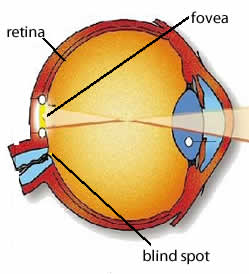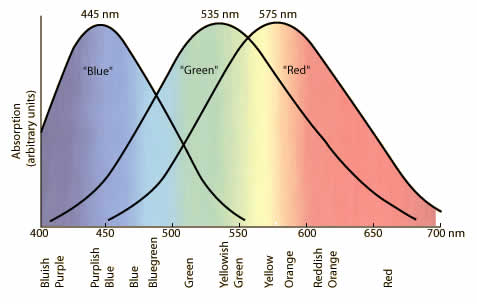If a bright red cricket ball comes speeding toward the batter, he will see its colour, shape, and motion all at once. However the brain deals with each of these characteristics separately. Parallel processing enables quick visualisation and decision making. Neurons are relatively slow, they take several milliseconds to process an input and create an output, without parallel processing decision making would be hopelessly slow.

The retina contains two types of photoreceptors called rods and cones. There names are given as a result of their shape.
The rods are more numerous, some 120 million, and are more sensitive than the cones to light. A single photon can generate a signal from a rod. However, they are not sensitive to color. Rod cells function only in dim light , get up on a dark moonlit night and look around. Although you can see shapes fairly well, colours are completely absent. Many people do not realise that they do not see colour in dim light.
The sensitivity of rods is predominantly due to a protein called rhodopsin. This protein is sensitive to light and sets of a cascade of events in the cell that ultimately produces a response.

The 6 to 7 million cones provide the eye's color sensitivity and they are much more concentrated in the central yellow spot known as the macula. In the center of that region is the fovea, a 0.3 mm diameter rod-free area densely packed with cones.
No photoreceptor cells exist in an area known as the blind spot. The blind spot is where the long axons of each neuron leaves the eye for the brain.


Even though the fovea, which is dense with cones, is essential for fine vision, it is less sensitive to light than the surrounding retina which is composed of rods. Thus, if we wish to detect a faint star at night, we must gaze slightly to the side of the star in order to project its image onto the more sensitive rods, as the star casts insufficient light to trigger a cone into action.
Three types of cones exist that become excited at three separate wavelengths, namely, red, blue and green.
The retina is mostly composed of
The blind spot contains
The fovea is an area composed mainly of
Which cell is most sensitive to light
The mechanism by which rods detect light involves a
Cones are cells that
How many different types of cones are there?